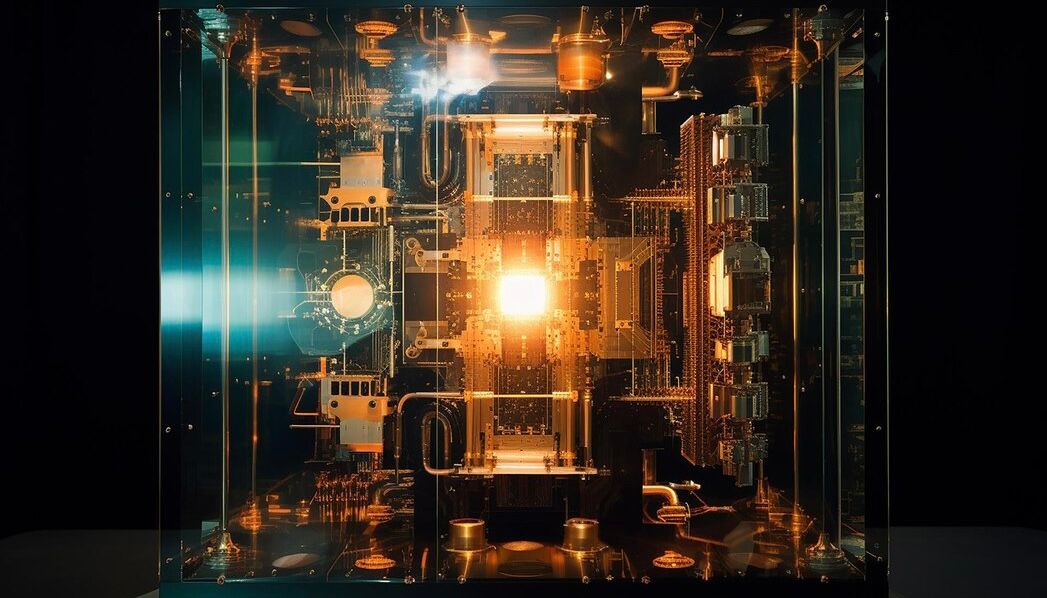China's Quantum Leap: The Emergence of Jiuzhang 3.0
China has made an awe-inspiring advancement in quantum computing technology, revealing their new light-based quantum computer, Jiuzhang 3.0. This computer has shattered global records with its unparalleled speed and ability, marking China's prominence in the ongoing quantum race. Developed under the expert guidance of esteemed physicist Pan

China has made an awe-inspiring advancement in quantum computing technology, revealing their new light-based quantum computer, Jiuzhang 3.0. This computer has shattered global records with its unparalleled speed and ability, marking China's prominence in the ongoing quantum race.
Developed under the expert guidance of esteemed physicist Pan Jianwei, Jiuzhang 3.0 boasts 255 detected photons. This is a significant leap from its predecessors: Jiuzhang 2.0 with 113 photons and the original Jiuzhang which had 76.
China's state media proudly announced that Jiuzhang 3.0 is a staggering million times faster than Jiuzhang 2.0 when it comes to solving Gaussian boson sampling problems. These problems serve as a standard mathematical model tailored for quantum computation. To offer a perspective on its unparalleled capability, while Jiuzhang 3.0 can solve the most intricate Gaussian boson sampling problems in just one microsecond, the world's reigning fastest supercomputer, "Frontier", would require over 20 billion years to accomplish the same task.
The research was diligently put together and then published in the Physical Review Letters, a reputable American scientific journal. Pan Jianwei elucidated the potential of quantum computers, emphasizing their ultra-fast parallel computing capabilities. He believes that quantum computers, with their specific algorithms, can revolutionize areas like code deciphering, big data optimization, weather forecasting, material design, and drug analysis, outshining traditional computers.
However, it's essential to note that China isn't the only player in this field. Last year, Xanadu, a company based in Toronto, stated that its quantum computer, Borealis, could tap into 219 photons and execute the GBS task in 36 microseconds, a task which a traditional computer would take 9,000 years to complete.
With the rapid growth in quantum computing, experts advise caution when juxtaposing different quantum computers, as they are conceptualized and built based on varied methodologies. Presently, the three primary quantum computer types include electron-based (superconducting), atom-based (cold atom or trapped ion), and photon-based or light-based.
Delving deeper into the technicalities of Jiuzhang 3.0, Lu Chaoyang, a key member of the research team, explained that innovative strategies were employed. Among these was the superconducting nanowire single-photon detection scheme that incorporated a fiber loop-based configuration. This significantly amplified the detected photons, enhancing the complexity of photonics quantum computing. The team's ingenious approach of demultiplexing photons into time bins through delays further optimized photon number resolving capabilities.
In a broader context, China's strides in quantum technology are evident. In 2021, Pan's team developed Jiuzhang 2.0 and also the 66-qubit programmable superconducting quantum computing system named "Zuchongzhi 2.1". This positioned China as the solitary nation to establish a quantum computational advantage through two primary technical avenues: photonics quantum computing technology and superconducting quantum computing technology.
The journey of quantum computational development is indeed challenging, entailing a continuous interplay between classical algorithms and quantum computing hardware. However, China's recent achievements in this domain have illuminated the promising path ahead. As research intensifies, the potential of quantum computers to transcend the capacities of classical computers becomes ever more evident, heralding a new era in technological evolution.




